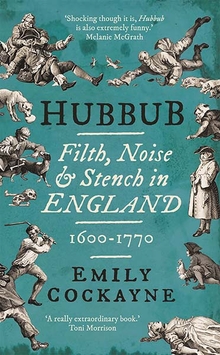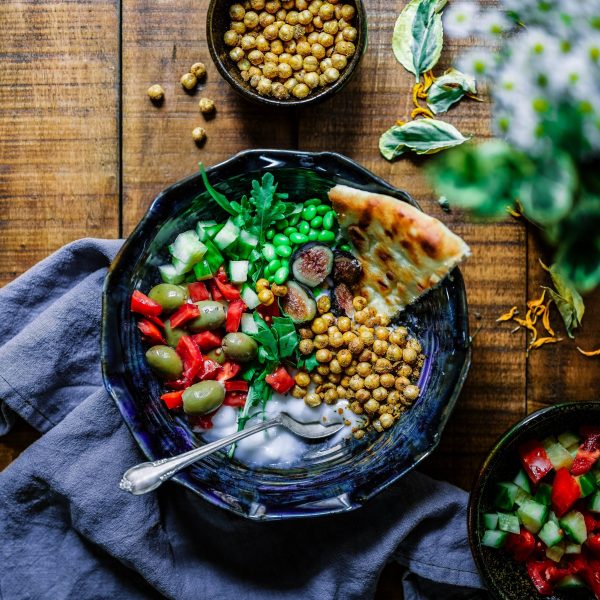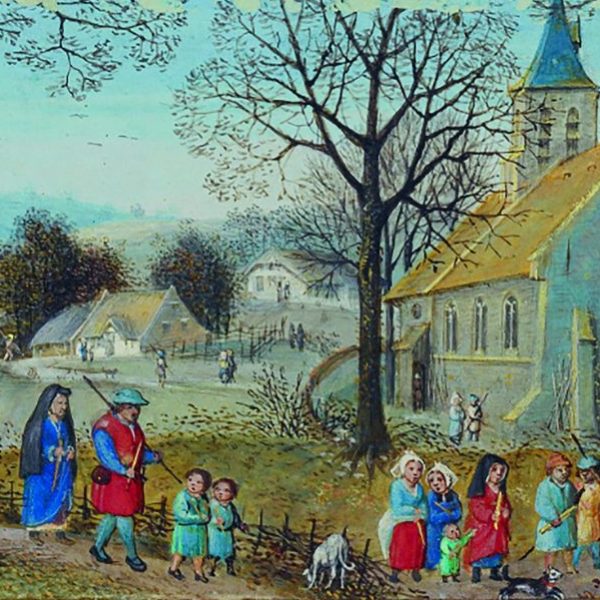“Where Bad’s the Best, Bad Must Be the Choice”
Emily Cockayne—
Marginal foodstuffs were eaten in dearth years when regular supplies dwindled. There were fewer opportunities for hedgerow foraging, mushroom picking and rabbiting in the cities than there were in the countryside. Proverbs hint at the desperation of the hungry:
Hunger makes hard bones sweet beans.
All’s good in a famine.
Hunger finds no Fault with the Cookery.
Hungry Dogs will eat dirty puddings.
Although England avoided the famines that blighted other countries, there was still hunger in the bad years. Recording a high rate of corn spoilage in 1693, due to a wet summer season, Anthony Wood noted that scarcity pushed prices out of the pockets of the poor, who were forced to ‘eat turnips instead of bread’. During this dearth Thomas Tryon outlined a diet for a person on a budget of twopence per day. The recipes are uniformly bland: flour, water, milk and peas, all boiled to differing consistencies. Broken victuals, the remnants and scrapings from the more affluent plates, were a perk of service for some servants, and the saviour of many paupers. In hard times the poor ate badly.
The wife of Ned Ward’s botching tailor complains to her husband that his alehouse haunting has forced her to live off ‘a Mouldy old Cryst and a Cucumber’ while breastfeeding. Personal hardship forced some to root out alternatives: witnesses reported that a young London servant girl was so hungry in 1766 that she ate cabbage leaves and candles. A prisoner who absconded from the Tothill Fields Bridewell in the middle of the century was driven to her actions by hunger, ‘being obliged to eat the cabbage stalks off the dunghill’.
In post-famine conditions, more people are able to crave or dislike particular foods. Dislikes and aversions are not constant in communities or individuals, and food was subject to the whims of fashion, causing some products to be avoided for fear of scorn. For most urban dwellers the choice of foodstuffs expanded during the seventeenth and eighteenth centuries. Developments in internal and overseas transport, agriculture and the organisation of commerce increased the range and freshness of food for many consumers. As urban supplies became reliable and abundant in the eighteenth century, there was markedly less demand for seventeenth century staples like dry rye bread, salty meats and muddy stewpond fish. During a period of cereal shortage in 1756–8, Parliament authorised the sale of Standard Bread. These loaves, identified by their ‘S’ mark, contained a higher proportion of bran. Although one penny cheaper than the wheaten loaf, this bread did not prove popular. The well-fed minority thought this was picky, but it is understandable when one considers the habituation of tastes: once palates and digestive systems get used to more refined foods, they do not want to revert to the rough.
Differences between rich and poor diets and rural and urban ones increased. However, the ‘fine’ foods found in the cities were not universally appreciated and some people hankered after simpler rustic fare. One author complained that the natural taste of meat and fish had become ‘nauseous to our fashionable stomach’, and they needed to be daubed with ‘pernicious sauces’. The entire world, opined this compiler of a guide to trades, was being ‘ransacked for Spices, Pickles and Sauces, not to relish but to disguise our Food’. He thought something more sinister was afoot, warning that each dish is ‘seasoned with slow Poisons, and . . . pregnant with nothing, but the Seeds of Diseases both Chronick and acute’.
Freshness was not always of prime consideration when judging food quality; it was not neatly divisible into rotten and fresh. Indeed, some decay was necessary to improve the shelf-life of certain foods. Apples were fermented into cider, milk soured into cheese, and game tenderised as it decomposed on the hanging hook. However, food that didn’t smell, look, taste, feel or even sound right was rejected by all but the hungry. Reactions were based on lifelong experience and relied on all the senses. Individual experiences led to personal preferences within culturally proscribed limits, and foods with unpleasant side-effects such as flatulence, indigestion or bad breath were also avoided. Food poisoning, as suffered by Dudley Ryder in 1715 when a meat pie caused him to be ‘extremely sick in the night’, would make the consumer wary. John Byrom wrote home from London in 1729 complaining that he was ‘out of order, being forced to eat of some lamb that was wretched bad’. These were true gut reactions.
So how are we to judge the quality of eighteenth-century foods? We cannot apply modern shrink-wrapped standards. To twenty-first-century tastebuds, many of the recipes in Hannah Glasse’s popular The Art of Cookery (1747) seem disgusting, but her contemporaries would have relished most of her dishes. With hindsight and the development of chemical analysis and biological engineering we now know a little more about food quality, and would find fault with many techniques of animal and crop husbandry and food technology and preservation. However, as E. P. Thompson warned us, we must guard against the ‘enormous condescension of posterity’.
Emily Cockayne is a senior lecturer in Early Modern History at the University of East Anglia. She is the author of Rummage: A History of the Things We Have Reused, Recycled and Refused (Profile, 2020), Cheek by Jowl: A History of Neighbours (Random House, 2012) and Hubbub: Filth, Noise & Stench in England (2007), cited by Toni Morrison as an important source for A Mercy.
Further Reading:



























